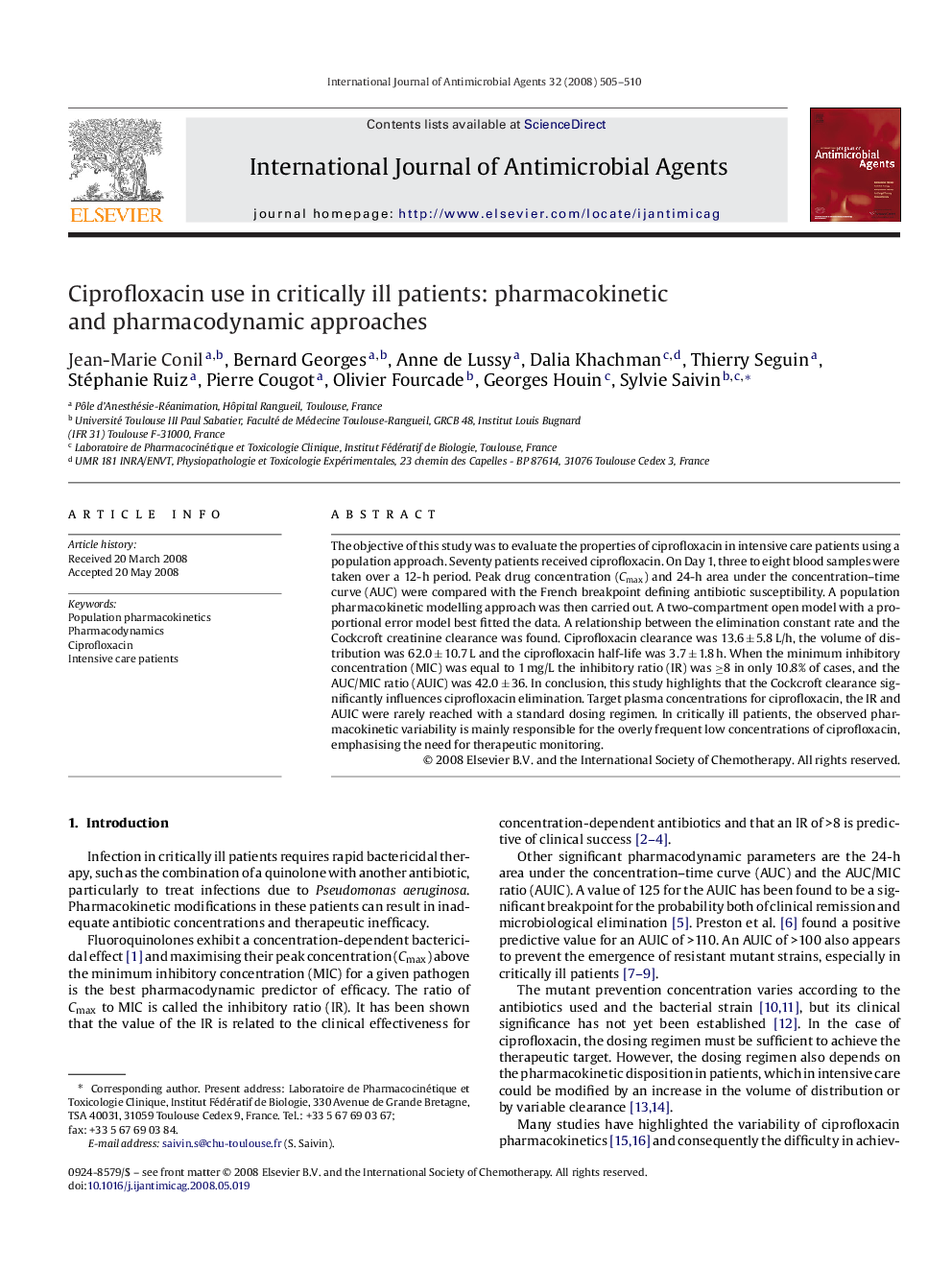| Article ID | Journal | Published Year | Pages | File Type |
|---|---|---|---|---|
| 3360179 | International Journal of Antimicrobial Agents | 2008 | 6 Pages |
The objective of this study was to evaluate the properties of ciprofloxacin in intensive care patients using a population approach. Seventy patients received ciprofloxacin. On Day 1, three to eight blood samples were taken over a 12-h period. Peak drug concentration (Cmax) and 24-h area under the concentration–time curve (AUC) were compared with the French breakpoint defining antibiotic susceptibility. A population pharmacokinetic modelling approach was then carried out. A two-compartment open model with a proportional error model best fitted the data. A relationship between the elimination constant rate and the Cockcroft creatinine clearance was found. Ciprofloxacin clearance was 13.6 ± 5.8 L/h, the volume of distribution was 62.0 ± 10.7 L and the ciprofloxacin half-life was 3.7 ± 1.8 h. When the minimum inhibitory concentration (MIC) was equal to 1 mg/L the inhibitory ratio (IR) was ≥8 in only 10.8% of cases, and the AUC/MIC ratio (AUIC) was 42.0 ± 36. In conclusion, this study highlights that the Cockcroft clearance significantly influences ciprofloxacin elimination. Target plasma concentrations for ciprofloxacin, the IR and AUIC were rarely reached with a standard dosing regimen. In critically ill patients, the observed pharmacokinetic variability is mainly responsible for the overly frequent low concentrations of ciprofloxacin, emphasising the need for therapeutic monitoring.
